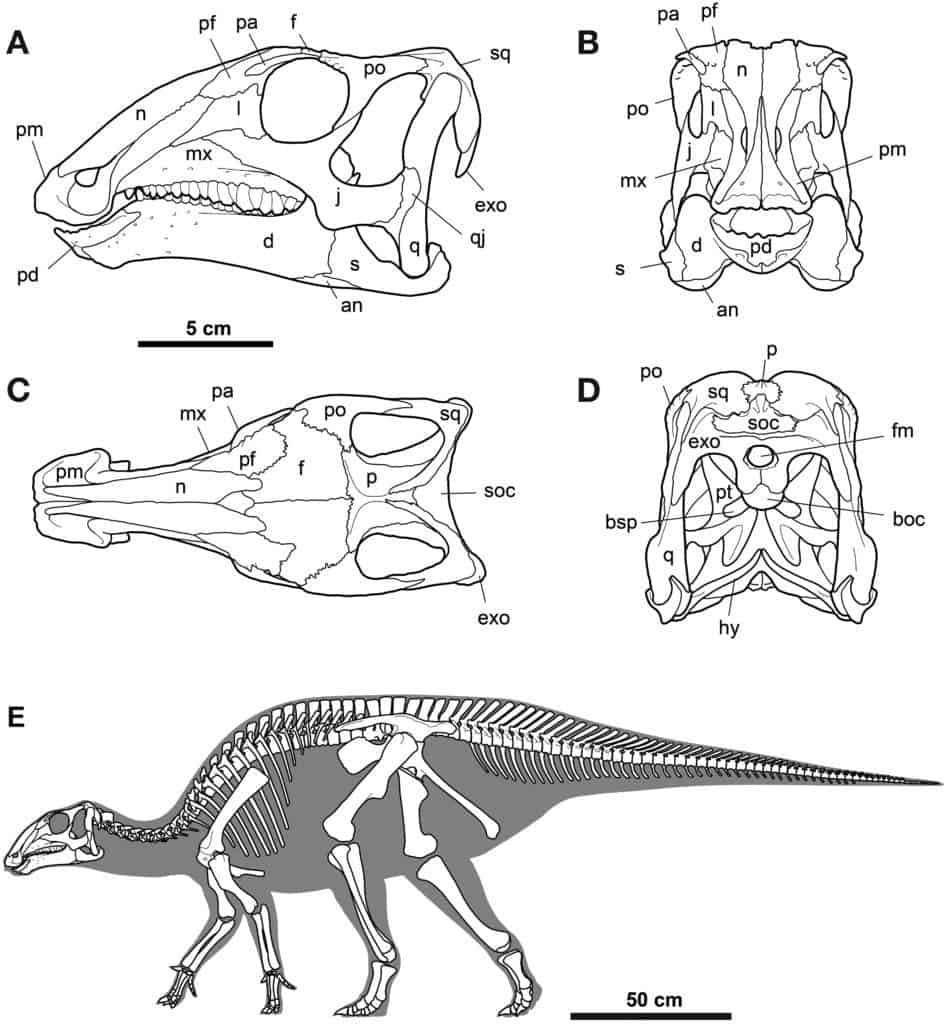A fossilized, nearly-intact dinosaur skeleton unearthed in Mongolia fills a gap in the evolution of hadrosaurs.

Skeletal reconstructions of Gobihadros mongoliensis.
Image credits Tsogtbaatar et al,, (2019), PLOS ONE.
Researchers from the Mongolian Academy of Science and the Royal Ontario Museum, funded by the Hayashibara Museum of Natural Sciences, describe a new species closely related to Hadrosaurids, which they named Gobihadros mongoliensis. The new species will help us better understand the evolution and ecology of the dinosaur family Hadrosauridae, the ‘duck-billed’ dinosaurs.
Quak
The article describes, for the first time, extraordinary well-preserved fossil material of hadrosauroid dinosaur as a new genus and species from the early Late Cretaceous in Mongolia. We hope that it will be very useful material for further study of the evolution of hadrosauroids, iguanodintians and ornithopods as well,” the authors write.
Duck-billed dinosaurs were quite successful during their day in the Late Cretaceous. They had a wide geographical range over the world as it was at the time and were important large herbivores in their ecosystem. But we don’t really know much about the species during its early days. Some partial fossils found previously are helping us piece together the duck-billed dinos’ family tree, but complete fossils remain few and far between.
Gobihadros mongoliensis was discovered at the Bayshin Tsav Site in the Gobi Desert, Mongolia. Several specimens were found at the site, including one “virtually complete” skeleton measuring almost three meters in length. Anatomical comparisons to Hadrosauridae fossils revealed that this species doesn’t quite fit into the family. The species, however, are very closely related. Gobihadros is the first hadrosaur-like dinosaur from the Late Cretaceous of central Asia known from complete remains.
The team also reports, based on comparisons to later Asian hadrosaurs, that Gobihadros would not make it through the natural-selection gauntlet. Later Asian hadrosaurs are related to species in today’s North America, and likely migrated from there during the Late Cretaceous. The authors caution that we need more fossils from this transition period in order to get a proper idea of what happened — and when. But, from the data we have now, Gobihadros seems to have disappeared from Asia and was soon followed by the hadrosaurs. This suggests that the hadrosaurs ultimately outcompeted species like Gobihadros.
“[…] the relationships of other taxa are well-resolved, and in combination with biostratigraphic data, suggest that hadrosaurids from the Maastricthian of Asia migrated from North America across Beringia in the Campanian, and replaced non-hadrosaurids such as Gobihadros,” the authors conclude.
The paper “A new hadrosauroid (Dinosauria: Ornithopoda) from the Late Cretaceous Baynshire Formation of the Gobi Desert (Mongolia)” has been published in the journal PLoS ONE.









